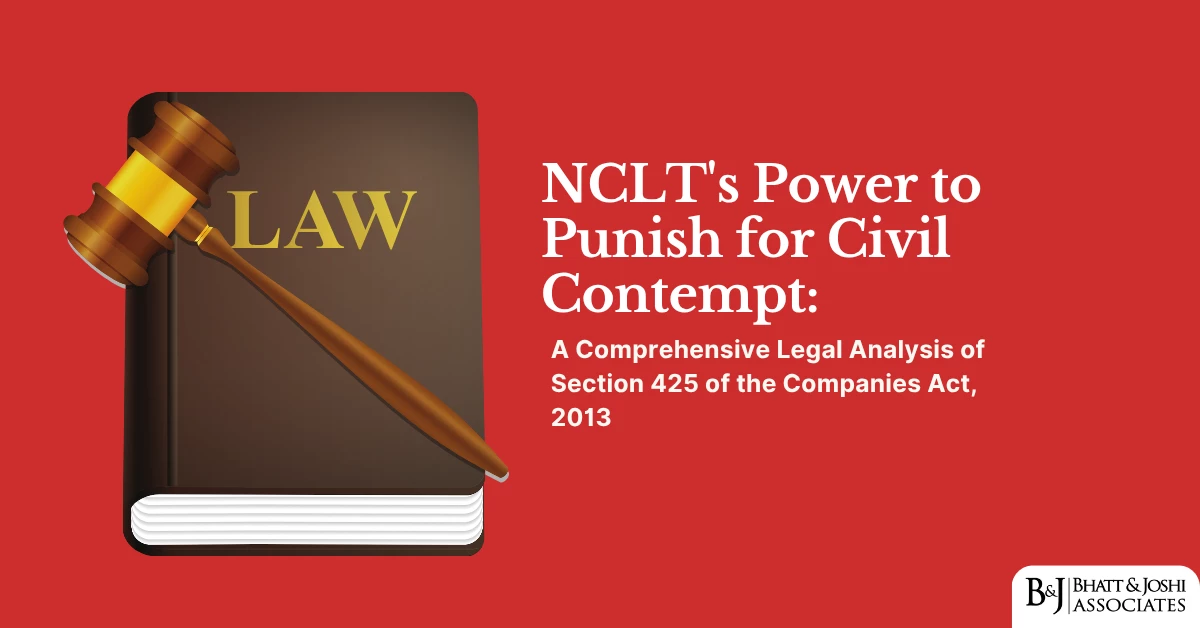Introduction
The Securities and Exchange Board of India (SEBI) introduced the Alternative Investment Funds (AIF) Regulations in 2012 to create a structured regulatory framework for private pools of capital in India. Prior to these regulations, alternative investments operated under a fragmented regulatory landscape, with venture capital funds regulated under the SEBI (Venture Capital Funds) Regulations, 1996, while many other investment vehicles remained largely unregulated. The SEBI AIF Regulations, 2012 represented a watershed moment in India’s financial regulatory history, bringing diverse investment vehicles under a unified regulatory framework while acknowledging their distinct characteristics and requirements.
The regulations emerged at a critical juncture when India’s private capital markets were gaining momentum but lacked the regulatory clarity needed to instill investor confidence and facilitate orderly market development. By establishing clear categories, investment conditions, and disclosure requirements, the regulations aimed to balance investor protection with the flexibility needed for alternative investment strategies to flourish.
Historical Context and Regulatory Background
Before 2012, India’s alternative investment landscape was characterized by regulatory ambiguity. Venture capital funds operated under the 1996 regulations, which had become outdated given the evolution of the industry. Private equity funds, hedge funds, and other alternative strategies operated in a regulatory gray area, creating uncertainty for both fund managers and investors.
This fragmented approach hindered the development of India’s private capital markets, limiting their ability to channel resources to emerging sectors and innovative businesses. Recognizing these challenges, SEBI initiated a consultative process to develop a comprehensive regulatory framework for alternative investments.
The AIF Regulations were notified on May 21, 2012, replacing the earlier Venture Capital Fund Regulations. The regulatory objective was articulated by SEBI’s then-Chairman U.K. Sinha, who stated: “The AIF framework aims to recognize alternative investments as a distinct asset class, provide them regulatory legitimacy, and create an environment conducive to their growth while ensuring adequate investor protection.”
Categories of Alternative Investment Funds Under Regulation 3
The cornerstone of the SEBI AIF Regulations 2012 is the categorization of funds based on their investment focus and impact objectives. Regulation 3(4) establishes three distinct categories:
“Category I Alternative Investment Fund” encompasses funds that invest in sectors or areas that the government or regulators consider socially or economically desirable. These include venture capital funds, SME funds, social venture funds, and infrastructure funds. Regulation 3(4)(a) specifies that these funds shall receive “consideration in the form of exemption from certain regulations or incentives or concessions from the government or any other regulator,” recognizing their potential positive externalities.
“Category II Alternative Investment Fund” includes funds that do not fall under Category I or III and do not undertake leverage or borrowing other than to meet day-to-day operational requirements. Private equity funds and debt funds typically fall under this category. Regulation 3(4)(b) states that these funds “shall not undertake leverage or borrowing other than to meet day-to-day operational requirements and as permitted in these regulations.”
“Category III Alternative Investment Fund” comprises funds that employ diverse or complex trading strategies, including the use of leverage. Hedge funds fall under this category. Regulation 3(4)(c) explicitly states that these funds “may employ diverse or complex trading strategies and may employ leverage including through investment in listed or unlisted derivatives.”
This categorization has provided much-needed clarity to the market, enabling investors to understand the nature and risk profile of different fund types while allowing regulators to apply tailored requirements based on each category’s characteristics.
Registration Requirements Under Chapter II
Chapter II of the SEBI AIF Regulations 2012 establishes comprehensive registration requirements for AIFs. Regulation 3(1) unequivocally states: “No entity or person shall act as an Alternative Investment Fund unless it has obtained a certificate of registration from the Board in accordance with these regulations.”
The application process, detailed in Regulation 3, requires submission of information about the fund’s proposed activities, investment strategy, key personnel, and risk management systems. SEBI evaluates applications based on criteria including the applicant’s track record, professional competence, financial soundness, and regulatory compliance history.
Capital adequacy requirements vary by category, with Regulation 10 mandating a minimum corpus of “ten crore rupees” for all AIFs. The regulations also require funds to have a continuing interest of the lower of “two and half percent of the corpus or five crore rupees,” ensuring that fund managers have skin in the game.
The registration framework has played a crucial role in professionalizing India’s alternative investment industry, setting minimum standards for fund managers and providing institutional legitimacy to AIFs.
Investment Conditions and Restrictions Under Chapter III
Chapter III establishes investment conditions and restrictions tailored to each AIF category, balancing investor protection with investment flexibility. Regulation 15(1)(a) mandates that “Category I and II Alternative Investment Funds shall invest not more than twenty-five percent of the investable funds in one Investee Company.” This diversification requirement aims to mitigate concentration risk.
For Category III AIFs, which typically employ more complex strategies, Regulation 15(1)(b) sets the single-investment limit at “ten percent of the corpus,” with additional leverage and exposure restrictions detailed in Regulation 16.
Investment strategies are further guided by category-specific provisions. For instance, Regulation 16(1)(c) requires that Venture Capital Funds under Category I invest “at least two-thirds of their investable funds in unlisted equity shares or equity linked instruments of a venture capital undertaking or in companies listed or proposed to be listed on a SME exchange or SME segment of an exchange.”
The regulations also address potential conflicts of interest. Regulation 20(2) prohibits investments in “associates” except with investor approval and subject to conditions. This provision aims to prevent fund managers from channeling investments to related entities on preferential terms.
These investment conditions have created a structured framework for AIFs while preserving the flexibility needed for different investment strategies, contributing to the rapid growth of India’s private capital markets.
General Obligations and Responsibilities Under Chapter IV
Chapter IV establishes comprehensive obligations for AIF managers, setting high standards for governance and conduct. Regulation 21(1) articulates the overarching responsibility: “The manager and sponsor shall be responsible for all the activities of the Alternative Investment Fund and shall ensure compliance with all applicable regulations as well as formulated schemes or funds or plans for the Alternative Investment Fund.”
Fiduciary duties are explicitly established, with Regulation 21(3) mandating that managers “act in a fiduciary capacity towards their investors” and ensure activities are “executed in compliance with the objectives of the AIF as disclosed in the placement memorandum.”
The regulations also address operational aspects, with Regulation 19 requiring the appointment of custodians for funds with corpus exceeding “five hundred crore rupees” and Regulation 20 establishing conflict of interest provisions. These governance requirements have enhanced investor protection while professionalizing fund management practices.
Transparency and Disclosure Requirements Under Regulation 23
Regulation 23 establishes robust transparency and disclosure requirements for AIFs. Regulation 23(1) mandates that AIFs “shall ensure transparency in their functioning and make such disclosures to investors as specified in the placement memorandum, including but not limited to the following: (a) financial, risk management, operational, portfolio, and transactional information regarding fund investments; (b) any fees ascribed to the Manager or Sponsor; and any fees charged to the Alternative Investment Fund or any investee company by an associate of the Manager or Sponsor; (c) any inquiries or legal actions by legal or regulatory bodies in any jurisdiction; (d) any material liability arising during the Alternative Investment Fund’s tenure; (e) any breach of a provision of the placement memorandum or agreement made with the investor or any other fund documents; (f) change in control of the Sponsor or Manager or Investee Company; (g) any change in the constitution or legal status of the Manager or Sponsor or the Alternative Investment Fund; and (h) any change in the fee structure or hurdle rate.”
The regulation further requires periodic disclosures to investors, with Regulation 23(2) mandating quarterly reports on “material changes during the quarter” and annual reports containing audited financial information. These disclosure requirements have significantly enhanced transparency in what was previously an opaque market segment.
Landmark Cases Shaping the Regulatory Landscape
ILFS Investment Managers v. SEBI (2019)
This landmark case before the Securities Appellate Tribunal (SAT) addressed governance standards for AIFs, particularly regarding conflicts of interest. ILFS Investment Managers challenged a SEBI order regarding inadequate disclosures about investments in related entities.
The SAT ruling emphasized the importance of robust governance, stating: “The fiduciary nature of the AIF manager’s role requires the highest standards of transparency regarding potential conflicts of interest. The purpose of the AIF Regulations is not merely to create a registration framework but to ensure that alternative investments operate with integrity and transparency.”
This judgment established that AIF managers must maintain arm’s length relationships with investee companies and provide comprehensive disclosures about potential conflicts, reinforcing the governance standards embedded in the regulations.
Venture Intelligence v. SEBI (2016)
This case clarified information disclosure requirements under the regulations. Venture Intelligence, a data provider, challenged SEBI’s interpretation of confidentiality provisions regarding fund performance data.
The SAT ruling balanced transparency with legitimate confidentiality concerns, stating: “While the AIF Regulations prioritize investor transparency, they do not mandate public disclosure of all fund information. Proprietary investment strategies and detailed portfolio information may warrant confidentiality protection, provided investors receive the disclosures required under Regulation 23.”
This decision provided important guidance on balancing transparency with the confidentiality needed for certain investment strategies, helping data providers and fund managers navigate disclosure boundaries.
India REIT Asset Managers v. SEBI (2020)
This case addressed the distinction between AIFs and Real Estate Investment Trusts (REITs), clarifying the regulatory boundaries between these investment vehicles. India REIT Asset Managers challenged SEBI’s determination that certain of their investment activities required AIF registration.
The SAT ruling elucidated the regulatory distinction, stating: “The defining characteristic of an AIF under Regulation 2(1)(b) is that it is a privately pooled investment vehicle that collects funds from investors for investing in accordance with a defined investment policy. The mere investment in real estate assets does not automatically subject an entity to REIT regulations if its structure and operations align with the AIF definition.”
This judgment provided important clarity on the regulatory perimeter, helping investment managers structure vehicles appropriately based on their investment focus and operational model.
Impact on Private Capital Market Development
The SEBI AIF Regulations 2012 have catalyzed remarkable growth in India’s private capital markets. SEBI data reveals that the AIF industry has grown from approximately ₹20,000 crores in 2014 to over ₹4.4 lakh crores by 2021, reflecting the confidence instilled by the regulatory framework.
The regulations have facilitated capital formation across diverse sectors. Category I AIFs, particularly venture capital funds, have channeled significant resources to startups and emerging businesses, contributing to India’s entrepreneurial ecosystem. Data from industry associations indicates that AIF investments have supported over 3,000 startups between 2012 and 2021.
The regulatory framework has also attracted foreign capital, with several global private equity and venture capital firms establishing India-focused AIFs. This international participation has enhanced not only capital availability but also global best practices in investment management and governance.
Effectiveness in Balancing Regulation and Flexibility
The SEBI AIF Regulations 2012 have generally succeeded in balancing investor protection with the flexibility needed for alternative investments to thrive. The category-based approach allows tailored requirements based on investment strategies and risk profiles, avoiding a one-size-fits-all approach that might stifle innovation.
Investor protection mechanisms, including custodian requirements, disclosure obligations, and conflict of interest provisions, have enhanced market integrity. Simultaneously, the regulations provide flexibility regarding investment strategies within defined parameters, enabling fund managers to pursue diverse approaches.
However, implementation challenges remain. Industry feedback suggests that certain aspects of the regulations, particularly around taxation and overseas investments, require further refinement to enhance flexibility while maintaining regulatory oversight. SEBI has demonstrated willingness to adapt the framework, issuing several amendments since 2012 to address emerging market needs.
Comparative Analysis with Global PE/VC Regulations
The Indian AIF framework shares similarities with global models but exhibits distinct characteristics reflecting India’s market conditions. Compared to the US regulatory approach under the Investment Advisers Act and exemptions for private funds, India’s framework is more prescriptive, with specific category-based requirements rather than blanket exemptions.
The European Union’s Alternative Investment Fund Managers Directive (AIFMD) similarly establishes comprehensive regulations for alternative investments but focuses more on the manager than the fund itself. The Indian approach regulates both managers and funds, reflecting the developing nature of India’s market, where both entities require regulatory oversight.
In terms of disclosure requirements, the Indian framework is more prescriptive than the US model but less onerous than the EU’s AIFMD. This middle-ground approach reflects a pragmatic balancing of investor protection with the need to avoid excessive compliance burdens in an emerging market context.
Economic Impact of AIF Investments
The economic impact of investments facilitated by the AIF framework has been substantial. Industry studies estimate that AIF investments have contributed to the creation of over 600,000 direct and indirect jobs between 2012 and 2021, particularly in knowledge-intensive sectors like technology, healthcare, and financial services.
Beyond employment, these investments have fostered innovation and productivity improvements. Venture capital funds, operating under Category I, have supported numerous technology startups that have developed solutions addressing India-specific challenges in areas like financial inclusion, healthcare access, and agricultural productivity.
Infrastructure AIFs have channeled capital to critical projects in energy, transportation, and urban development, complementing public investment and addressing India’s infrastructure gaps. Debt AIFs have provided alternative financing sources for mid-sized companies facing challenges accessing traditional bank credit.
From a macroeconomic perspective, the formalization of alternative investments under the AIF framework has contributed to deeper and more diverse capital markets, enhancing the financial system’s efficiency in capital allocation and risk management.
Conclusion and Future Outlook
The SEBI (Alternative Investment Funds) Regulations, 2012 represent a pivotal development in India’s financial regulatory landscape, transforming what was once a fragmented, partially regulated sector into a structured, transparent market segment. By establishing clear categories, investment conditions, and governance standards, the regulations have facilitated substantial growth in private capital while enhancing investor protection.
Looking ahead, several challenges and opportunities will shape the continued evolution of AIF regulation in India. The integration of AIFs with other regulatory frameworks, particularly around taxation and foreign investment, requires further streamlining to enhance operational efficiency. Emerging investment themes like impact investing, climate finance, and technology-focused strategies may necessitate regulatory refinements to accommodate their unique characteristics.
As India’s capital markets continue to mature, the AIF framework will likely evolve toward a more principles-based approach with greater emphasis on risk management and governance rather than prescriptive investment restrictions. This evolution would align with the trajectory of more developed markets while maintaining the investor protection focus essential for market integrity.
The SEBI AIF Regulations 2012 have laid a strong foundation for India’s private capital markets, enabling them to play an increasingly important role in the country’s economic development. Their continued refinement, based on market feedback and evolving global standards, will be crucial for sustaining this positive trajectory and maximizing the contribution of alternative investments to India’s growth story.
References
- Securities and Exchange Board of India (SEBI) (2012). SEBI (Alternative Investment Funds) Regulations, 2012. Gazette of India, Part III, Section 4.
- Securities Appellate Tribunal (2019). ILFS Investment Managers v. SEBI. SAT Appeal No. 274 of 2019.
- Securities Appellate Tribunal (2016). Venture Intelligence v. SEBI. SAT Appeal No. 135 of 2016.
- Securities Appellate Tribunal (2020). India REIT Asset Managers v. SEBI. SAT Appeal No. 192 of 2020.
- SEBI (2020). Annual Report 2019-20. Chapter on Alternative Investment Funds.
- Indian Private Equity and Venture Capital Association (IVCA) (2021). Impact Assessment Report: AIFs in Indian Economy.
- Ministry of Finance (2015). Report of the Alternative Investment Policy Advisory Committee.
- Reserve Bank of India (2019). Report on Trends and Progress of Banking in India 2018-19. Chapter VI: Non-Banking Financial Institutions.
- European Securities and Markets Authority (2019). AIFMD – A Framework for Risk Monitoring.
- U.S. Securities and Exchange Commission (2013). Implementing Dodd-Frank Wall Street Reform and Consumer Protection Act – Transitioning to Alternative Investment Fund Regulatory Regime.














